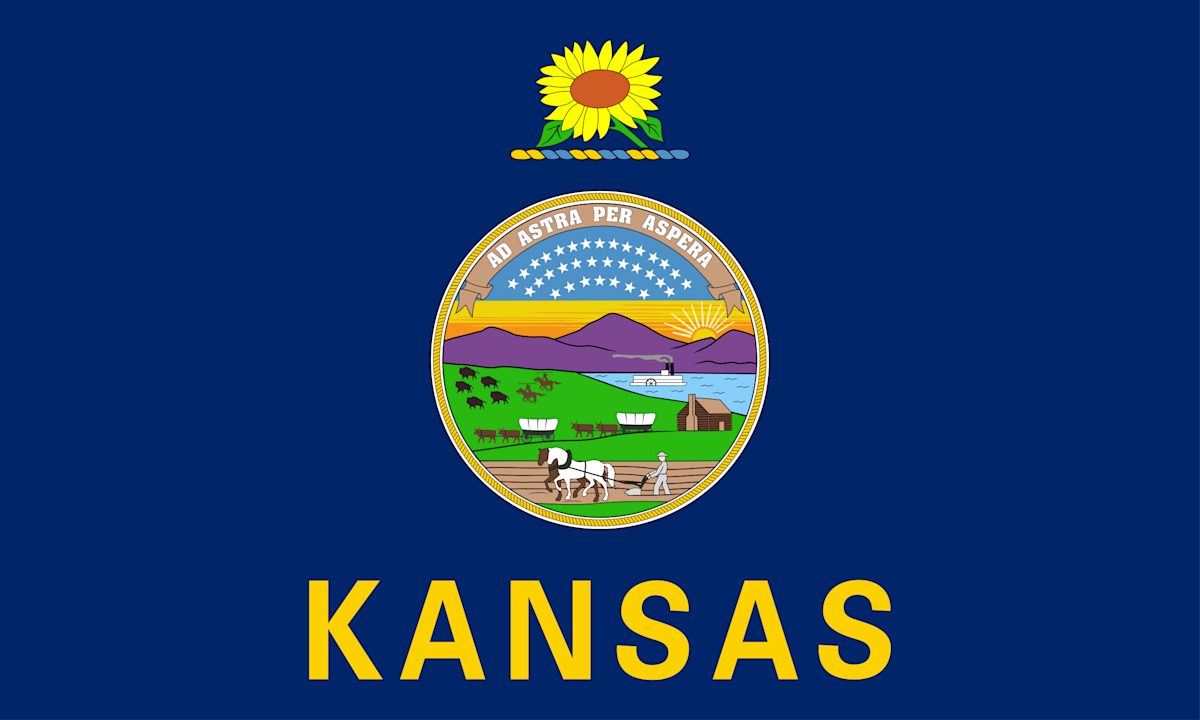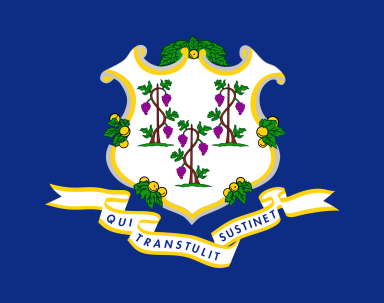The Kansas Department of Transportation (KDOT) findings in 2022 showed that 814 motorcycle crashes occurred in the state during the year. There were 726 motorists injured as a result of these crashes and collisions, while 50 individuals lost their lives in 47 fatal crashes. These numbers are similar to those from the state’s most recent accessible records from 2021, wherein 766 people were injured, and 46 perished in 869 total crashes.
Based on evaluations of accidents from the same year, more than half of those injured or killed were not wearing their helmets. The National Highway Traffic Safety Administration cites that speeding and alcohol intoxication are still leading factors in most motorcycle-related deaths. Additionally, the KDOT found that driver inattention and right-of-way violations contributed to the majority of accidents where a driver was at fault.
Because motorcycle accidents continue to happen on Kansas roadways, the state continues to remind motorcyclists to follow traffic rules and ordinances to prevent crashes and collisions from occurring. It also has a number of laws that affect the processes and outcomes involved for those who seek to reimburse their economic and non-economic losses in the wake of an accident.
Kansas Helmet and Equipment Regulations
All motorcycle riders under 18 are required to wear a helmet that follows the KDOT’s standards, according to state traffic ordinances. The helmet must fit snugly around the wearer’s head and has no defects such as loose padding or cracks. Loose-fitting helmets are not recommended, as they can fly off a person’s head if an accident occurs.
All riders and passengers must also wear eye and face protection, regardless of age. Under state regulations, these types of equipment can include protective goggles and glasses and transparent face shields that are impact-resistant and shatter-proof. People may not wear eye and face protection provided their motorcycle has a windshield at least 10 inches high, starting from the center of the vehicle’s handlebars.
Additionally, prior to making any trip, motorcyclists must ensure that the equipment and parts on their motorcycles are in proper working condition. These parts include:
Headlights, taillights, and brake lights
Clutch and throttle
Turn signals
Brakes
Mirrors
Tires
Horn.
Kansas Pursuit Policies
In the event that a potential suspect must be pursued, law enforcement personnel in Kansas are authorized to instigate a pursuit within their respective counties or in a location where their assistance is requested. Officers must only chase a suspect if he has committed a violent felony or if an officer has enough basis to believe that the suspect poses an immediate threat to the safety of other motorists and pedestrians.
Throughout the course of a chase, police officers must adhere to traffic and pursuit regulations to ensure that no other individuals are endangered as a result. In terms of specific examples, the Kansas City, Kansas Police Department has a set of rules that its personnel must follow while pursuing a suspect. Under these rules, officers must:
Activate emergency lights and sirens to protect themselves and other individuals and to warn the suspect being pursued
Take into account whether the gravity of the suspect’s offense warrants the continuation of a pursuit
Terminate pursuits once the lives and property of other individuals face greater risks of harm.
To determine whether a pursuit should be initiated or continued, police officers must also take the following factors into account:
Time of day
Road and traffic conditions
Environmental factors (including weather)
Performance of the vehicles involved in the chase
Nature of the area where the chase occurs
Likelihood of the suspect’s successful apprehension.
All pursuits must only be carried out by primary and secondary units unless a field supervisor authorizes the participation of other teams as needed. Police motorcycles may initiate a pursuit if they have emergency lights and sirens but must stop and retreat to a termination point once a marked police vehicle arrives. A pursuit can be terminated if the police have determined the suspect's identity and can be easily apprehended later.
Kansas Speed Limits
Kansas imposes both basic and absolute speed limits throughout the state. Under basic speed limits, motorists must operate their vehicles at an appropriate and safe speed depending on the factors and obstacles present on the road. This applies when a vehicle navigates a railroad crossing or intersection, moves through a narrow or winding roadway, or approaches a curve or hillcrest.
Absolute speed limits, on the other hand, refer to specific limits that are imposed based on a particular area or roadway. Any motorist who exceeds an absolute speed limit will be penalized accordingly. Unless indicated otherwise by traffic signs and ordinances, Kansas’s absolute speed limits are:
30 miles per hour in urban and residential districts
55 miles per hour on township and county highways
70 miles per hour on specific improved highways in rural areas
75 miles per hour on separated multilane highways that are designated by the KDOT
75 miles per hour on the Kansas Turnpike and rural segments of freeways (with a minimum speed limit of 40 miles per hour).
In addition to these limits, there is an absolute speed limit of 65 miles per hour for all other highways that are not specified above.
Penalties for speeding violations in Kansas depend on how much an offender exceeds a basic or absolute speed limit. A fine can range between $30 and $300, while an offense will count toward a license revocation. Under Kansas law, any driver who commits a total of three moving violations, including those other than speeding, within the span of 12 months will have his license temporarily revoked.
Kansas DUI Law
To prevent accidents caused by alcohol intoxication, Kansas prohibits motorists from driving a vehicle while drunk. Under the state’s DUI laws, any motorist whose blood alcohol content level is .08 percent or higher will be penalized. The state can convict an intoxicated motorist for a DUI offense if he attempts to operate his vehicle, even if the vehicle is not in motion at the time of the offense.
Kansas law enforcement officers impose the implied consent principle when dealing with potential drunk drivers. Under this principle, drivers automatically consent to a blood or breath test once they choose to operate a vehicle. Those who refuse to be tested will face a one-year license suspension and must drive with an ignition interlock device for at least two years.
The penalties for a DUI offense include a fine between $500 and $2,500 and a prison sentence lasting between two days and one year, depending on how many violations a driver has already committed. Offenders will also have their license suspended for 30 days to one year, and they must complete an alcohol and drug safety action education or treatment program at their expense. Furthermore, they will have their license suspended for 30 days to one year, with a requirement to drive with an ignition interlock device for a minimum of 180 days.
If a driver is convicted of driving while intoxicated and there is a passenger under the age of 14 present, he will be subject to an additional one-month sentence to be served after the initial sentence.
Kansas Motorcycle Insurance Requirements
Kansas law requires all motor vehicle owners in the state to obtain auto insurance coverage, which is used to address any resulting costs involving injuries and damaged property if an accident happens. Under this mandate, motorcycle owners must have an insurance policy with the following minimum requirements:
$25,000 for bodily injuries per person
$50,000 for bodily injuries per accident
$25,000 for property damage.
In addition to auto insurance, all motorists are required to obtain personal injury protection. This option covers the insurance owner’s expenses for hospital care, rehabilitation, lost income, funerary arrangements, and in-home services after an accident, regardless of who was at fault. The state’s minimum requirements for PIP coverage are:
$4,500 for medical expenses per person
$4,500 for rehabilitative care
$2,000 for burial costs
$900 per month for one year for lost income
$25 per day for in-home services.
Lastly, Kansas also dictates that motorists have uninsured and underinsured motorist coverage policies. These reimburse an accident victim’s hospital expenses if the offending driver has no insurance or insufficient policy amounts. The minimum requirements for UI and UIM coverage are also $25,000 and $50,000 for bodily injuries per person and per accident, respectively.
Kansas Is A No-Fault State for Insurance Claims
Kansas follows no-fault guidelines for insurance claims related to motor vehicle accidents, which is why the state requires all motorists to have personal injury protection. As mentioned, PIP coverage covers an accident victim’s losses regardless of who caused the crash or collision.
Under the state’s no-fault rules, motorcycle accident victims can only file a lawsuit against an offending driver if their total medical expenses exceed $2,000 or their injuries are considered serious. Injuries that fall under this classification include:
Compressed, compound, and displaced bone fractures
Fractures on weight-bearing bones
Bodily harm that results in permanent disfigurement or loss of a bodily function.
A victim who sustains any of these injuries can pursue compensation for all types of losses resulting from the injury, including pain and suffering. Plaintiffs are also free to recover losses concerning vehicular damage from at-fault individuals even without meeting any of the requirements.
How Much Can Someone Sue for a Motorcycle Accident in Kansas?
There is no imposed limit on the total amount of economic damages that a motorcycle accident victim in Kansas can recover. Economic damages include medical and repair expenses, as well as other financial losses stemming from the victim’s inability to work or find work due to injury.
Additionally, after a 2019 ruling from the state’s Supreme Court, there are no longer any caps on non-economic damages in personal injury cases. This means that plaintiffs can be compensated in full for injury-related losses involving pain and suffering, loss of companionship, loss of enjoyment of life, and mental anguish. However, this does not affect non-economic damages brought by wrongful death, as the state continues to impose a cap of $250,000 for such losses.
If an accident case involves a government entity, the state limits the maximum amount of recoverable damages in such cases to $500,000. This policy applies if an accident occurs due to a defect on public property or if a government employee causes a crash while carrying out his duty of employment.
Plaintiffs can also pursue punitive damages if the court finds that a defendant deliberately disregarded the safety of others in an accident. If such awards are granted, plaintiffs can only recover a maximum of either $5 million or the defendant’s highest annual gross income in the past five years, whichever is the lesser amount. The court can also award damages equal to 50% of the defendant’s net worth if an initial award is insufficient to punish the defendant’s actions.
Kansas Is A Modified Comparative Negligence State for Motorcycle Accident Lawsuits
A motorcycle accident victim who files a lawsuit against an offending driver to recover losses must follow the state’s legal guidelines under the modified comparative negligence rules. This means that if the plaintiff is found to be partially liable for the accident, his recoverable damages will be reduced proportionally according to his assigned percentage of liability. For example, if a plaintiff who is 20% liable for an accident is awarded $100,000 in damages, 20% will be deducted from the award, and he will only receive $80,000.
If there are multiple at-fault parties in an accident, the court or jury will assign each party a percentage of its respective blame in the accident. In this case, each party will be liable for its share of the victim’s losses based on the percentage of the apportioned fault.
Under modified comparative negligence rules, plaintiffs can only recover damages if their total fault does not exceed the liability of other parties. As a result, if a plaintiff’s fault reaches or exceeds 50%, he will be barred from obtaining any compensation.
Kansas Statute of Limitations for Motorcycle Accidents
The statute of limitations for motorcycle accidents in Kansas is two years from the date of the accident. Plaintiffs must file a claim or lawsuit within this given time frame or risk having their chance to recover losses dismissed by the court. The same duration applies for wrongful death claims, though the statute begins on the date of the victim’s death instead.
Kansas’s statute of limitations functions differently if an accident case involves a plaintiff who is either under the age of 18 or mentally incompetent due to disability or insanity. In these cases, the statute lasts until one year after the person’s 18th birthday or after he recovers. In both cases, plaintiffs cannot file a lawsuit after eight years have elapsed since the time of the accident.
Kansas also follows the discovery rule in personal injury cases, wherein the victim only finds out about an injury at a later date. In these instances, the statute of limitations only begins at the date of the injury’s discovery or the time when the victim should have reasonably discovered it. However, a lawsuit will no longer be valid if 10 years have passed since the date of the accident that caused the injury.
Legal Resources for Kansas Motorcycle Accident Victims
Kansas Bar Association
State citizens who have inquiries concerning local laws or seek legal counsel can visit the Kansas Bar Association’s website. Its sections include a Lawyer Referral Service, where site visitors can fill out a referral request form to find a suitable lawyer based on their practice areas and location. It also has a Legal Resources section with compiled links directing to the websites of legal organizations throughout the state and country. In addition, those who wish to file a complaint against a judge or lawyer can visit the website to obtain the contact details of the Commission on Judicial Conduct and the Office of the Disciplinary Administrator.
Kansas Insurance Department - Consumer Complaint
The Kansas Insurance Department’s website allows auto insurance owners throughout the state to file a complaint online against an agent or company by completing the Online Consumer Complaint Form. Any complainant will be issued a complaint case number and given the option to download a PDF copy of their complaint information. Alternatively, they can download a copy of the complaint form and send it through e-mail, fax, or mail.
Kansas Department of Transportation - Property Damage Claims
Motorists who wish to file claims for property damage against the Kansas Department of Transportation may visit the department’s website for additional information concerning a claim’s requirements and where it can be filed. This primarily applies to people whose vehicles have suffered damage as a result of accidents brought on by flaws in KDOT-managed roads. Citizens can obtain a copy of the loss claim form online and submit it alongside other required documents as described on the website.
Kansas Motorcycle Handbook
Distributed by the Motorcycle Safety Foundation, the Kansas Motorcycle Handbook provides local riders with information concerning their motorcycles' proper and safe operation. It covers topics such as safety gear, vehicle control, lane positions, and driver responsibilities, focusing on educating riders to prevent accidents. The handbook also has sections discussing moving violations, mechanical problems, and basic information on questions that commonly appear on knowledge tests for those who wish to get a license.
Step into the world of Expertise.com, your go-to hub for credible insights. We don't take accuracy lightly around here. Our squad of expert reviewers, each a maestro in their field, has given the green light to every single article you'll find. From rigorous fact-checking to meticulous evaluations of service providers, we've got it all covered. So feel free to dive in and explore. The information you'll uncover has been stamped with the seal of approval by our top-notch experts.





